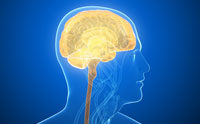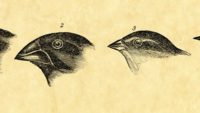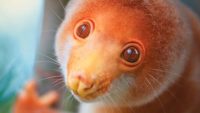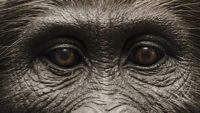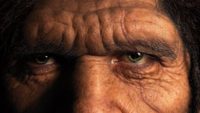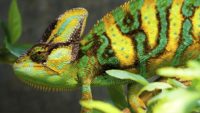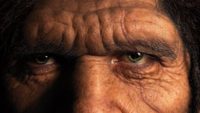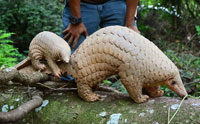By Dr. Don DeYoung One-third of the world’s sugar comes from the lowly sugar beet. But God stored other treasures in this tuber, which we’re just beginning to exploit. …read more Read more here: AIG Daily
A new bioengineered medical device was designed to treat people with a severe loss of neurologic muscle control. It affords a rare opportunity to clearly see some of the hidden relationships between mind, body, and designed interfaces. A unique case study indicates that the brain actually responds to the mind as a separate entity. More… …read more Read more here: icr.org
Did the human brain evolve from an ape-like brain? Two new reports describe four human genes named SRGAP2A, SRGAP2B, SRGAP2C, and SRGAP2D, which are located in three completely separate regions on chromosome number 1.1 They appear to play an important role in brain development.2 Perhaps the most striking discovery is that three of the four genes (SRGAP2B, SRGAP2C, and SRGAP2D) are completely unique to humans and found in no other mammal species, not even apes. While each of the genes share some regions of similarity, they are all clearly unique in their overall structure and function when compared to [More]
Cockroaches are thought to be disgusting pests, but they play an important role in degrading waste in nature. …read more Read more here: creation.com
Just when we thought we knew all the basics about the human body, anatomists made three surprising discoveries in 2016. The newfound human body complexity borders on science fiction. More… …read more Read more here: icr.org
Evolution would require new genetic information, but only loss of genetic information is observed …read more Read more here: creation.com
Does the Miller–;Urey study prove abiogenesis or does it in effect revive the concept of spontaneous generation. …read more Read more here: creation.com
By Stephanie McDorman Research suggests that many natural venoms and poisons contain chemicals that can block pain without the adverse effects posed by opioid-based drugs. …read more Read more here: AIG Daily
By Dr. Elizabeth Mitchell Scientists from Northwestern University have developed a mathematical model that may help explain animal ornamental mysteries. …read more Read more here: AIG Daily
A skeptical reader is challenged to conduct an experiment for God’s existence. …read more Read more here: creation.com
Evolutionists fail to get around the conundrums apoptosis (programmed cell death) produces for their paradigm. …read more Read more here: creation.com
A physicist is sure that dark matter sheds light on what happened to some of the world’s biggest extinct animals. …read more Read more here: creation.com
By Mike Wild Hiding in Indonesia’s tropical forests is one of the cutest—and most creatively designed—creatures on the planet. …read more Read more here: AIG Daily
By Ken Ham The poster child of human evolution is the well-known Australopithecus afarensis fossil named Lucy, found in Ethiopia in 1974. Evolutionists believe she walked on two legs and therefore represents bipedality in one of our supposed ancestors. Well, according to a new study, Lucy was a tree climber. (By the way, while evolutionary beliefs continue to “evolve,” the Bible stays the same and continues to be confirmed by science over and over again.) Apparently special CT scans of Lucy’s limbs showed evidence of tree-climbing behavior: Other comparisons carried out in the study suggest that even when Lucy walked [More]
By Dr. Elizabeth Mitchell A study in Proceedings of the National Academy of Sciences suggests that the modern practice of Caesarean section is rapidly altering human evolution. …read more Read more here: AIG Daily
It’s one of Australia’s most curious creatures and-when first discovered-most thought it was a fraud. …read more Read more here: creation.com
By Dr. Elizabeth Mitchell The microbe LUCA is supposed to have been the Last Universal Common Ancestor of all living things. …read more Read more here: AIG Daily
Appealing to natural selection is no rescue device for evolutionists. Mutations simply accumulate too fast. …read more Read more here: creation.com
Novelty fish are an aquarist’s treat and research into bichirs ‘walking’ is now claimed to support the sea-land evolutionary transition by man’s fishy ancestors. …read more Read more here: creation.com
In the early days of genetics, genes were thought to be solitary entities. Now it’s well understood that genes operate in complex networks and that gene mutations can have multiple detrimental effects. A new study reconfirms mutations are a major roadblock for evolution. More… …read more Read more here: icr.org
Evolutionary scientists recently announced another spectacular dinosaur discovery. They nicknamed this one the Mud Dragon because it seems it died buried in mud. Junchang Lü and co-authors describe the new oviraptorid dinosaur in Scientific Reports. How did it really die? More… …read more Read more here: icr.org
Evolutionists have faith that a fish can evolve from water in a bathtub, given a billion years. …read more Read more here: creation.com
By Dr. Elizabeth Mitchell Hailed as a transitional form between modern snakes and their supposed lizard ancestors, Tetrapodophis amplectus is now the subject of heated controversy. …read more Read more here: AIG Daily
By Dr. Elizabeth Mitchell A while back many were shocked to learn that Neanderthal genes and Denisovan genes were present in the genomes of many modern people. …read more Read more here: AIG Daily
Triceratops soft tissue found and carbon dated …read more Read more here: creation.com
A marvel of agility and patience waits poised among the branches of our garden plants … …read more Read more here: creation.com
Due to the complete lack of transitional fossils leading to the remarkable pangolin, secular scientists must resort to “just-so stories” to fill in evolution’s significant blanks, including how this amazing creature got its scales. Ricki Lewis, a Ph.D. geneticist, did exactly that with her recent article, “How the Pangolin Got Its Scales—A Genetic Just-So Story.” More… …read more Read more here: icr.org


















![Winds of This World [Live] Winds of This World [Live]](http://img.youtube.com/vi/iC7dduom6NA/0.jpg)



